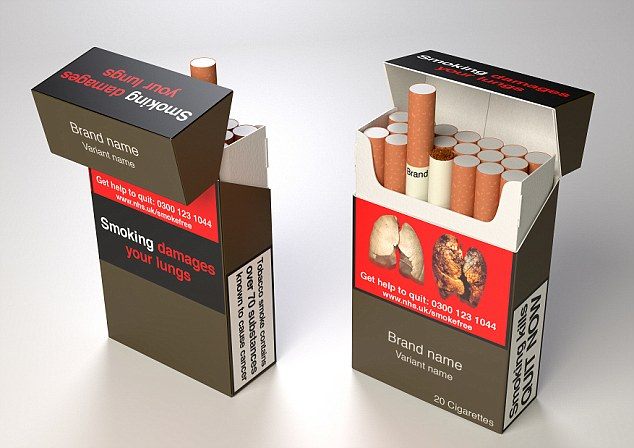Yesterday’s announcement by the government that they will bring a vote on legislation to introduce plain packaging of cigarettes before the next general election in May has already caused splits in Prime Minister David Cameron’s government. Foreign Secretary Philip Hammond has told the BBC that the issue is “complex” and that he would have to consider how to vote.
Parliament is expected to have a free vote on the issue of whether or not to replace the branding and logos on cigarette packets with gruesome images depicting the tumours and diseases which can be caused by smoking. The motion is expected to pass, with legislation introduced some time next year.
Speaking to the BBC’s Radio 5 Live, Hammond said that he would have to think carefully on how to vote. “It’s a complex issue because experiments have happened around the world,” he said. “It’s very important to look at the evidence of those experiments and see what the evidence shows. Also some concerns have been expressed about whether it’s going to make the counterfeiting of cigarettes easier and increasing trade, which deprives us of a lot of revenue.”
His comments display mastery of the British art of understatement. The financial cost alone is expected to run into the billions, with compensation to the tobacco companies for loss of intellectual property and trademarks alone being estimated at anywhere between £5 to £11 billion.
Then there is the revenue impact: A packet of 20 cigarettes costs £8.47 on average, of which £6.49 is tax. As the evidence from Australia, where plain packaging was introduced in December 2012, is that illicit sales have been driven by plain packaging (exactly as critics warned), the Exchequer is expected to lose out on between £219 million to £348 million annually, according to a 2013 study by Centre for Economics and Business Research.
The same study also found that between 2,000 and 3,500 jobs can be expected to be lost in the convenience retailing sector, thanks purely to the decrease in revenue through tobacco sales. A further 2,250 to 3,850 jobs are expected to be lost in the tobacco manufacturing sector, despite a rise in tobacco consumption.
It is clear the the government is aware of these likely consequences, but is choosing to ignore them. Writing for Spiked yesterday, Christopher Snowdon, director of lifestyle economics at the Institute of Economic Affairs, said: “Not to be upstaged [by the Labour party], the government resurrected the plain-packaging ruse in November 2013, commissioning a member of the medical establishment, Sir Cyril Chantler, to conduct a new review into the policy.
“This time, however, no social or economic costs would be weighed up and the public would not be invited to voice their views. Chantler said from the outset that he would not concern himself with the impact of plain packaging on smuggling, counterfeiting or international trade, nor with ‘competition, trade-marking and freedom of choice’. Instead, he focused only on the claims made by the say-anything, do-anything tobacco prohibitionists.”
A previous consultation by the government on the measure had been met with 660,000 responses, two thirds of which were against plain packaging. It took the Department of Health eleven months to process them all.
Yet the evidence from Australia has been conclusive: the illicit trade has indeed been boosted by plain packaging. A study by the Australian Institute of Health and Welfare found that 12.5 percent of total population (14 or older) “have seen tobacco products without plain packaging (an indication that the product is illicit)”, rising to 34 percent of smokers who had seen unbranded illicit tobacco, and 10.7 percent who are currently smoking it. Around 10 percent of smokers had purchased illicit tobacco, of which “just under half” had bought 15 or more packs. Overall, sales of illicit tobacco rose by around 25 percent between 2011 and 2014.
Moreover, although the policy is explicitly designed to put young people off smoking, ostensibly by educating them on the negative consequences of smoking, youth smoking rates have actually risen by 36 percent between 2010 and 2013.
It seems the only winners from the policy are, in fact, the UK Independence Party, as Conservative voters, dismayed by their preferred party’s lack of evidence based policy and liberalism, are coming over to the usurpers in droves.
As UKIP leader Nigel Farage put it last year: “We are now on the verge of a Conservative-led government going for plain packaging on cigarettes. I can scarcely believable how stupid these people are are. It’s been tried in Australia and it’s been manna from heaven for organised crime and for counterfeiters. It is a daft and stupid thing to do. Frankly, if you’re going to have plain packaging for cigarettes, why not on a bottle of Pernod, or a bottle of beer, or on a Krispy Kreme doughnut? Where does this end? I think the state is really far, far outreaching itself.”

COMMENTS
Please let us know if you're having issues with commenting.